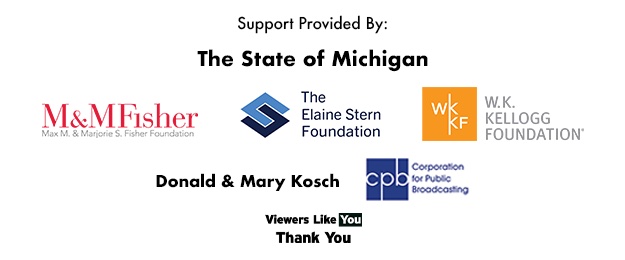Subjects
Shows
Analyze and compare two- and three-dimensional shapes, in different sizes and orientations, using informal language to describe their similarities, differences, [...]
Model shapes in the world by building shapes from components (e.g., sticks and clay balls) and drawing shapes.
Compose simple shapes to form larger shapes. For example, "can you join these two triangles with full sides touching to [...]
Count forward beginning from a given number within the known sequence (instead of having to begin at 1).
Write numbers from 0 to 20. Represent a number of objects with a written numeral 0-20 (with 0 representing a [...]
Understand the relationship between numbers and quantities; connect counting to cardinality.
When counting objects, say the number names in the standard order, pairing each object with one and only one number [...]
Understand that the last number name said tells the number of objects counted. The number of objects is the same [...]
Understand that each successive number name refers to a quantity that is one larger.
Count to answer “how many?” questions about as many as 20 things arranged in a line, a rectangular array, or [...]
Identify whether the number of objects in one group is greater than, less than, or equal to the number of [...]
Compare two numbers between 1 and 10 presented as written numerals.
Represent addition and subtraction with objects, fingers, mental images, drawings (drawings need not show details, but should show the mathematics [...]
Solve addition and subtraction word problems, and add and subtract within 10, e.g., by using objects or drawings to represent [...]
Decompose numbers less than or equal to 10 into pairs in more than one way, e.g., by using objects or [...]
For any number from 1 to 9, find the number that makes 10 when added to the given number, e.g., [...]
Compose and decompose numbers from 11 to 19 into ten ones and some further ones, e.g., by using objects or [...]
Describe measurable attributes of objects, such as length or weight. Describe several measurable attributes of a single object.
Directly compare two objects with a measurable attribute in common, to see which object has “more of”/“less of” the attribute, [...]
Classify objects into given categories; count the numbers of objects in each category and sort the categories by count. (Limit [...]
Describe objects in the environment using names of shapes, and describe the relative positions of these objects using terms such [...]
Correctly name shapes regardless of their orientations or overall size.
Use appropriate terminology in identifying and describing the function of common physical components of computing systems (hardware).
Describe basic hardware and software problems using accurate terminology.
Explain what passwords are and why we use them, and use strong passwords to protect devices and information from unauthorized [...]
Store, copy, search, retrieve, modify, and delete information using a computing device and define the information stored as data.
Collect and present the same data in various visual formats.
Identify and describe patterns in data visualizations, such as charts or graphs, to make predictions.
Model daily processes by creating and following algorithms (sets of step-by-step instructions) to complete tasks.
Model the way programs store and manipulate data by using numbers or other symbols to represent information.
Develop programs with sequences and simple loops, to express ideas or address a problem.
Decompose (break down) the steps needed to solve a problem into a precise sequence of instructions.
Develop plans that describe a program’s sequence of events, goals, and expected outcomes.
Give attribution when using the ideas and creations of others while developing programs.
Debug (identify and fix) errors in an algorithm or program that includes sequences and simple loops.
Using correct terminology, describe steps taken and choices made during the iterative process of program development.
Compare how people live and work before and after the implementation or adoption of new computing technology.
Work respectfully and responsibly with others online.
Keep login information private, and log off of devices appropriately.
Select and operate appropriate software to perform a variety of tasks, and recognize that users have different needs and preferences [...]
Students develop and employ strategies for understanding and solving problems in ways that leverage the power of technological methods to [...]
With guidance from an educator, students identify a problem and select appropriate technology tools to explore and find solutions
With guidance from an educator, students analyze age-appropriate data and look for similarities in order to identify patterns and categories.
With guidance from an educator, students break a problem into parts and identify ways to solve the problem.
Students understand how technology is used to make a task easier or repeatable and can identify real-world examples.
Students communicate clearly and express themselves creatively for a variety of purposes using the platforms, tools, styles, formats and digital [...]
With guidance from an educator, students choose different tools for creating something new or for communicating with others.
Students use digital tools to create original works.
Subjects
Shows
Analyze and compare two- and three-dimensional shapes, in different sizes and orientations, using informal language to describe their similarities, differences, [...]
Model shapes in the world by building shapes from components (e.g., sticks and clay balls) and drawing shapes.
Compose simple shapes to form larger shapes. For example, "can you join these two triangles with full sides touching to [...]
Count forward beginning from a given number within the known sequence (instead of having to begin at 1).
Write numbers from 0 to 20. Represent a number of objects with a written numeral 0-20 (with 0 representing a [...]
Understand the relationship between numbers and quantities; connect counting to cardinality.
When counting objects, say the number names in the standard order, pairing each object with one and only one number [...]
Understand that the last number name said tells the number of objects counted. The number of objects is the same [...]
Understand that each successive number name refers to a quantity that is one larger.
Count to answer “how many?” questions about as many as 20 things arranged in a line, a rectangular array, or [...]
Identify whether the number of objects in one group is greater than, less than, or equal to the number of [...]
Compare two numbers between 1 and 10 presented as written numerals.
Represent addition and subtraction with objects, fingers, mental images, drawings (drawings need not show details, but should show the mathematics [...]
Solve addition and subtraction word problems, and add and subtract within 10, e.g., by using objects or drawings to represent [...]
Decompose numbers less than or equal to 10 into pairs in more than one way, e.g., by using objects or [...]
For any number from 1 to 9, find the number that makes 10 when added to the given number, e.g., [...]
Compose and decompose numbers from 11 to 19 into ten ones and some further ones, e.g., by using objects or [...]
Describe measurable attributes of objects, such as length or weight. Describe several measurable attributes of a single object.
Directly compare two objects with a measurable attribute in common, to see which object has “more of”/“less of” the attribute, [...]
Classify objects into given categories; count the numbers of objects in each category and sort the categories by count. (Limit [...]
Describe objects in the environment using names of shapes, and describe the relative positions of these objects using terms such [...]
Correctly name shapes regardless of their orientations or overall size.
Use appropriate terminology in identifying and describing the function of common physical components of computing systems (hardware).
Describe basic hardware and software problems using accurate terminology.
Explain what passwords are and why we use them, and use strong passwords to protect devices and information from unauthorized [...]
Store, copy, search, retrieve, modify, and delete information using a computing device and define the information stored as data.
Collect and present the same data in various visual formats.
Identify and describe patterns in data visualizations, such as charts or graphs, to make predictions.
Model daily processes by creating and following algorithms (sets of step-by-step instructions) to complete tasks.
Model the way programs store and manipulate data by using numbers or other symbols to represent information.
Develop programs with sequences and simple loops, to express ideas or address a problem.
Decompose (break down) the steps needed to solve a problem into a precise sequence of instructions.
Develop plans that describe a program’s sequence of events, goals, and expected outcomes.
Give attribution when using the ideas and creations of others while developing programs.
Debug (identify and fix) errors in an algorithm or program that includes sequences and simple loops.
Using correct terminology, describe steps taken and choices made during the iterative process of program development.
Compare how people live and work before and after the implementation or adoption of new computing technology.
Work respectfully and responsibly with others online.
Keep login information private, and log off of devices appropriately.
Select and operate appropriate software to perform a variety of tasks, and recognize that users have different needs and preferences [...]
Students develop and employ strategies for understanding and solving problems in ways that leverage the power of technological methods to [...]
With guidance from an educator, students identify a problem and select appropriate technology tools to explore and find solutions
With guidance from an educator, students analyze age-appropriate data and look for similarities in order to identify patterns and categories.
With guidance from an educator, students break a problem into parts and identify ways to solve the problem.
Students understand how technology is used to make a task easier or repeatable and can identify real-world examples.
Students communicate clearly and express themselves creatively for a variety of purposes using the platforms, tools, styles, formats and digital [...]
With guidance from an educator, students choose different tools for creating something new or for communicating with others.
Students use digital tools to create original works.


